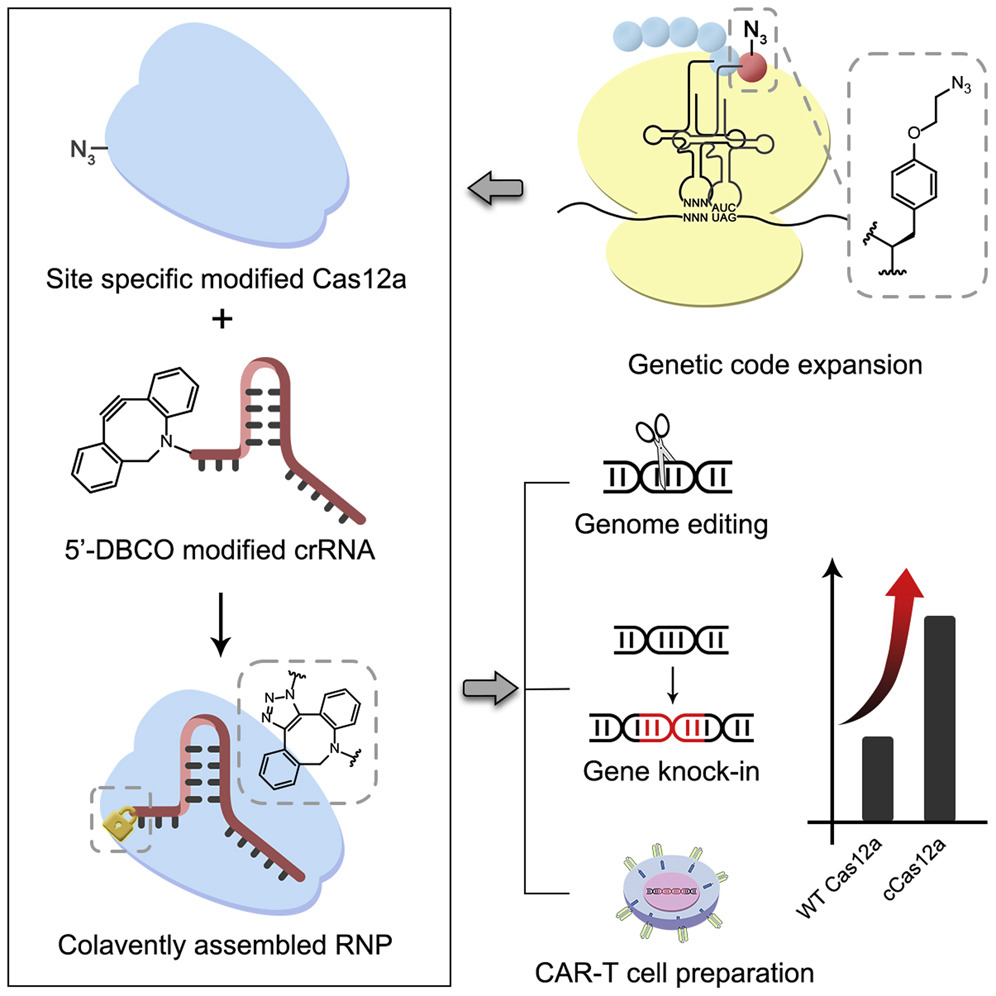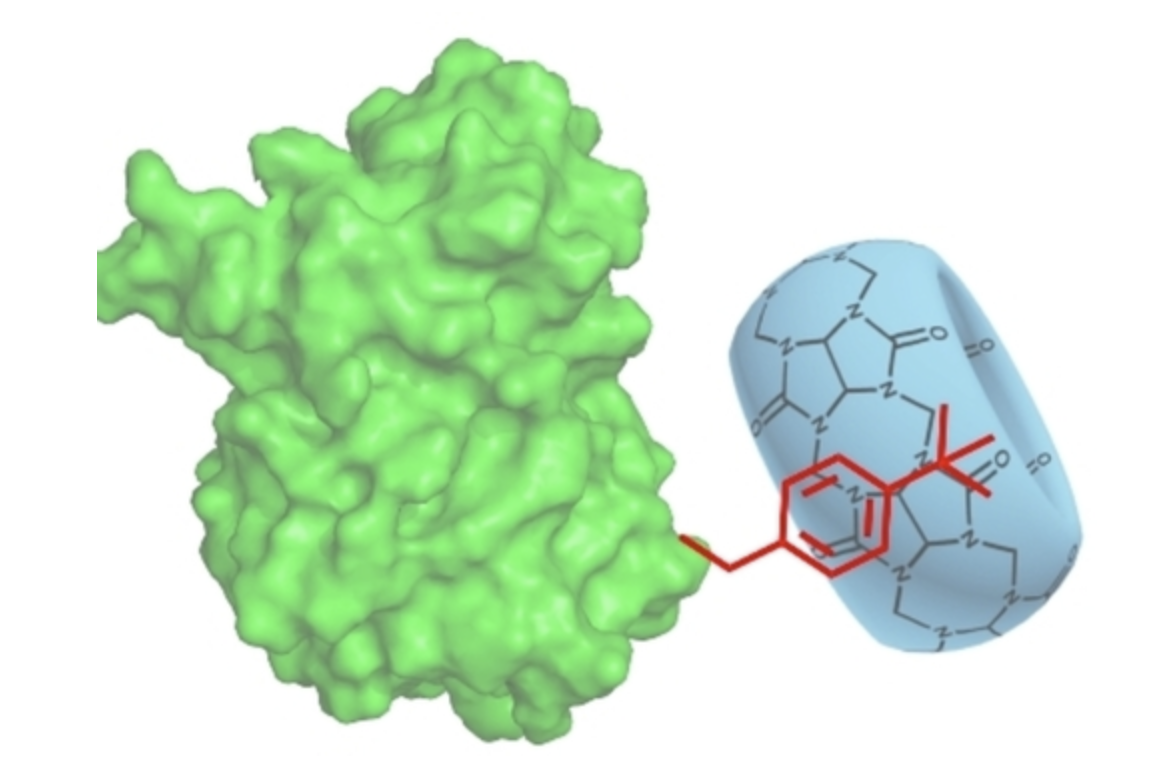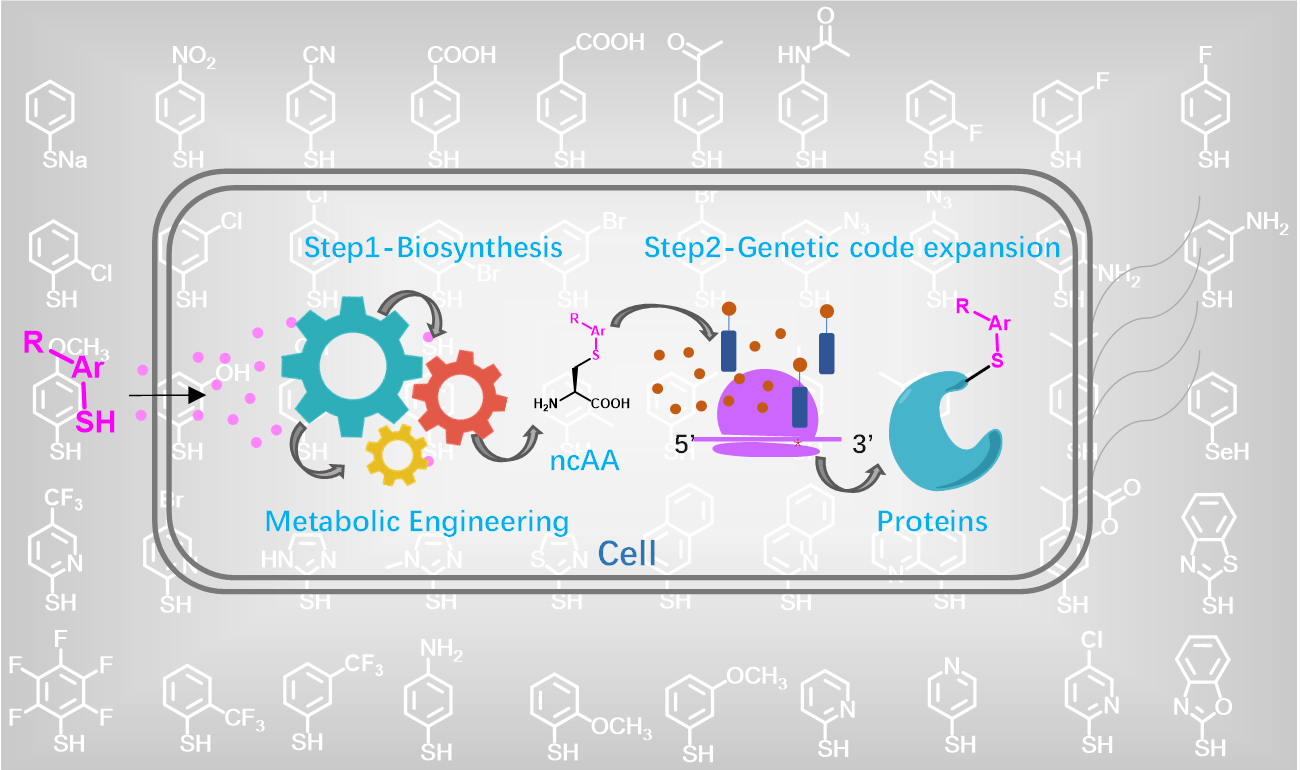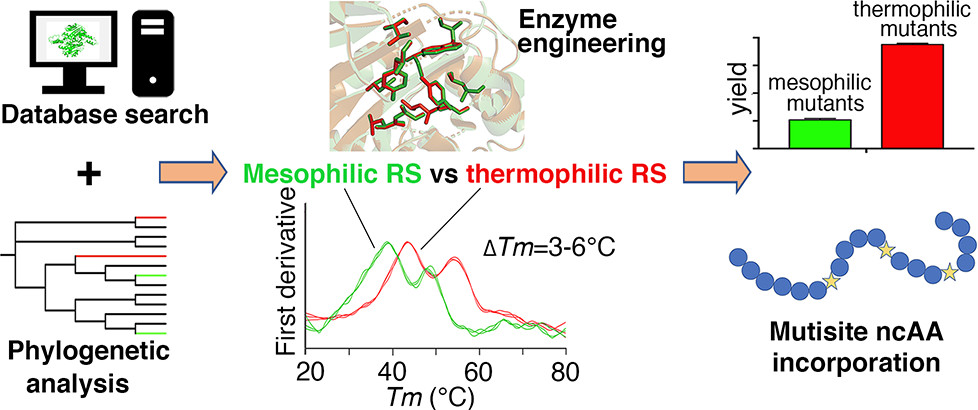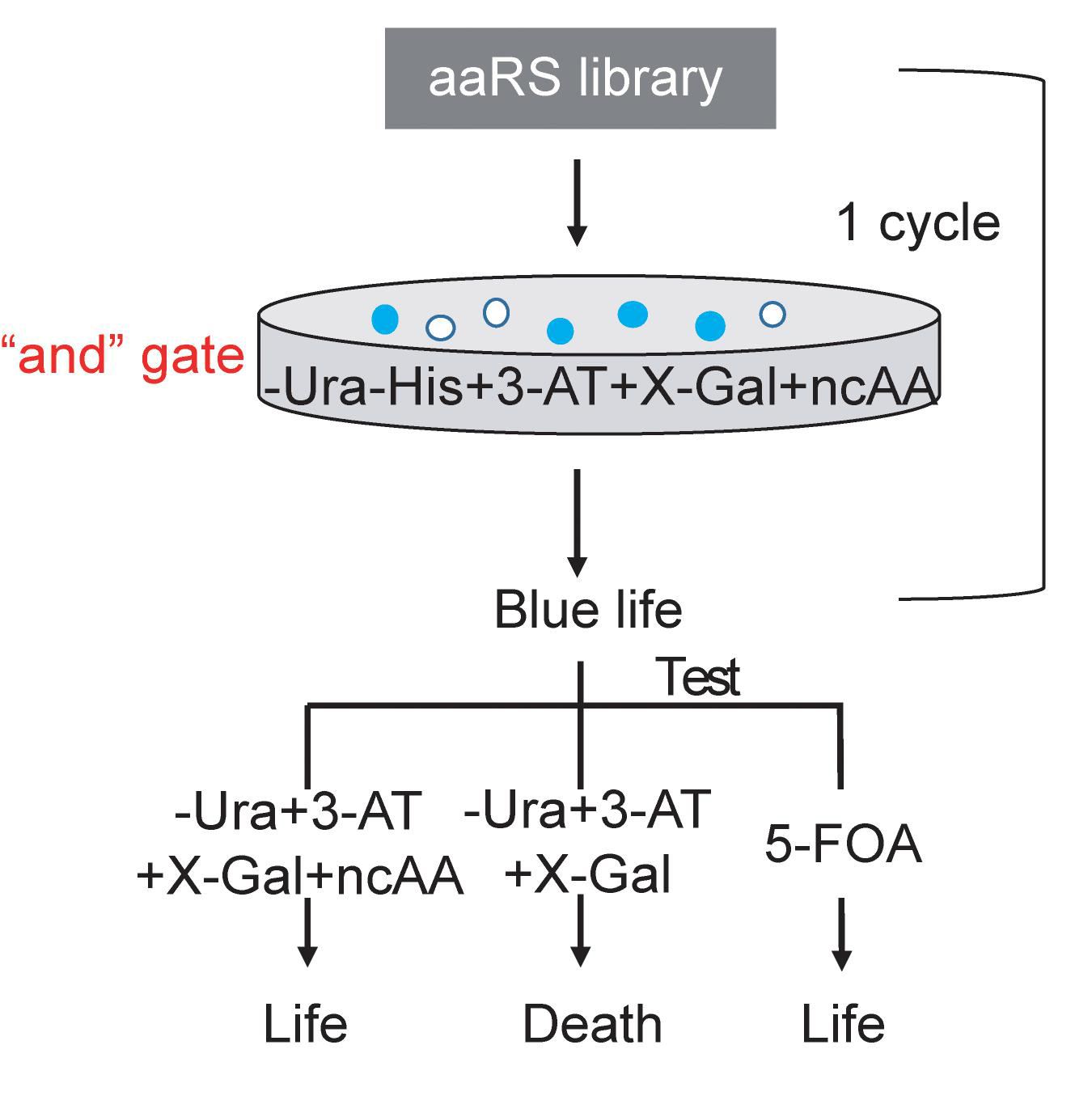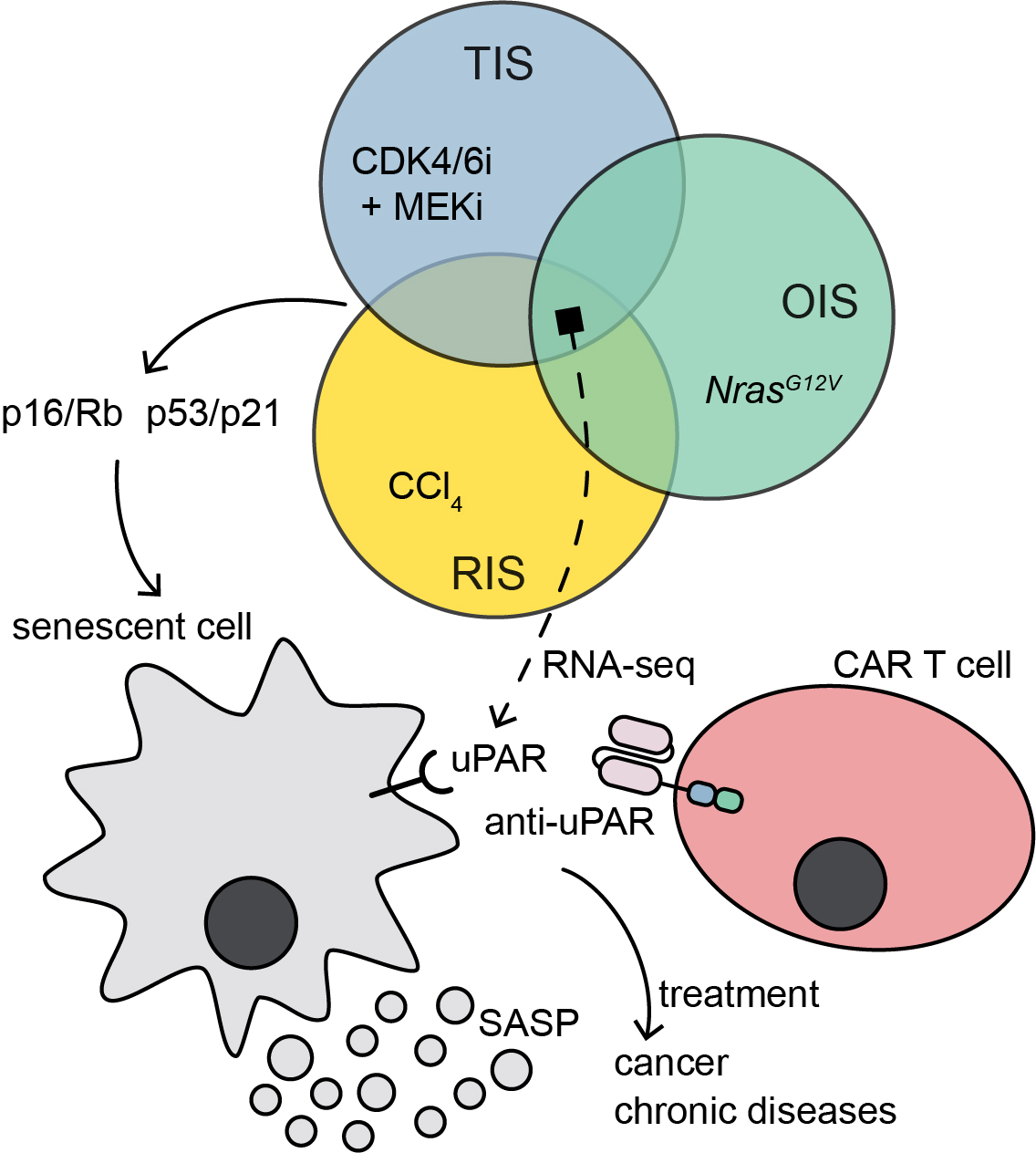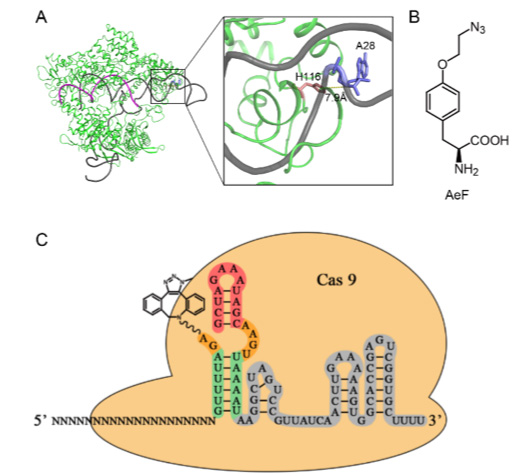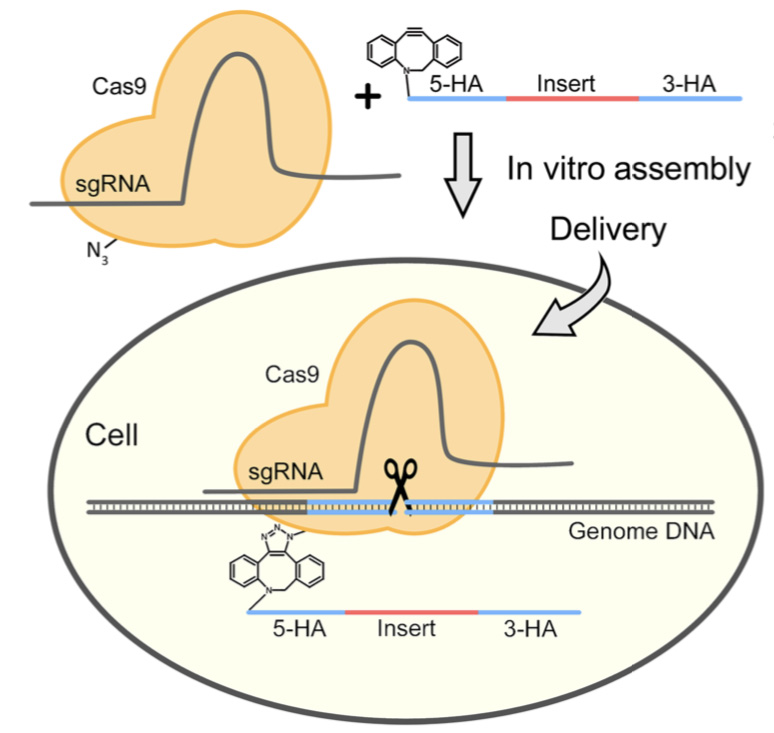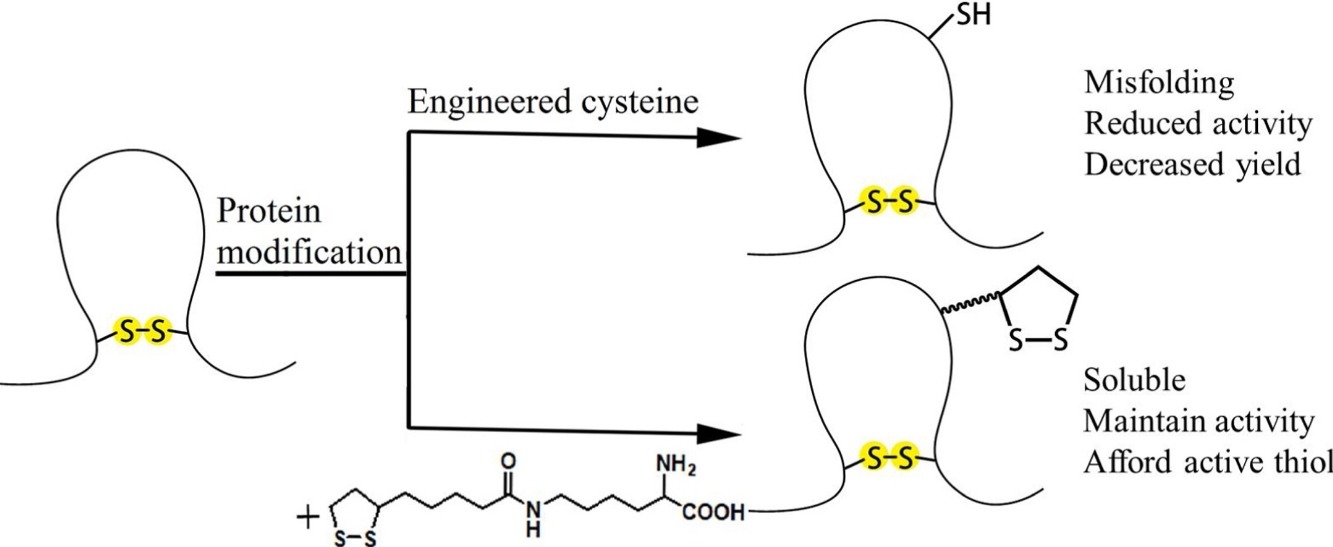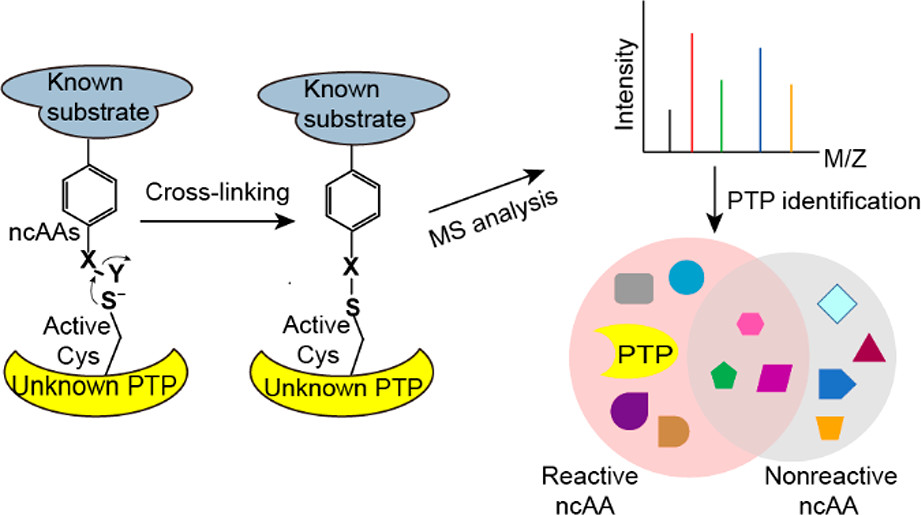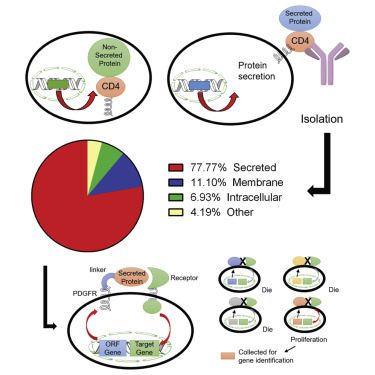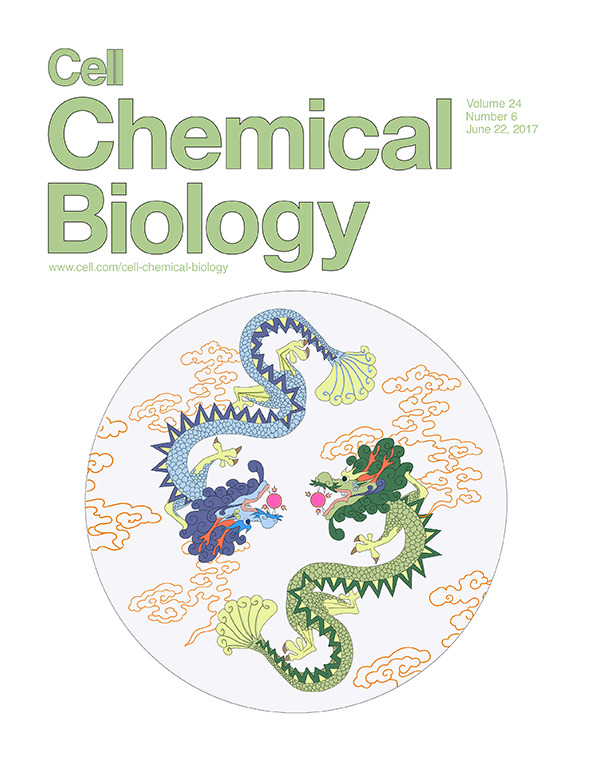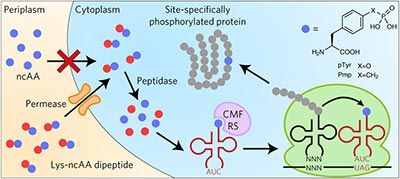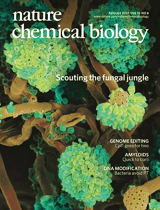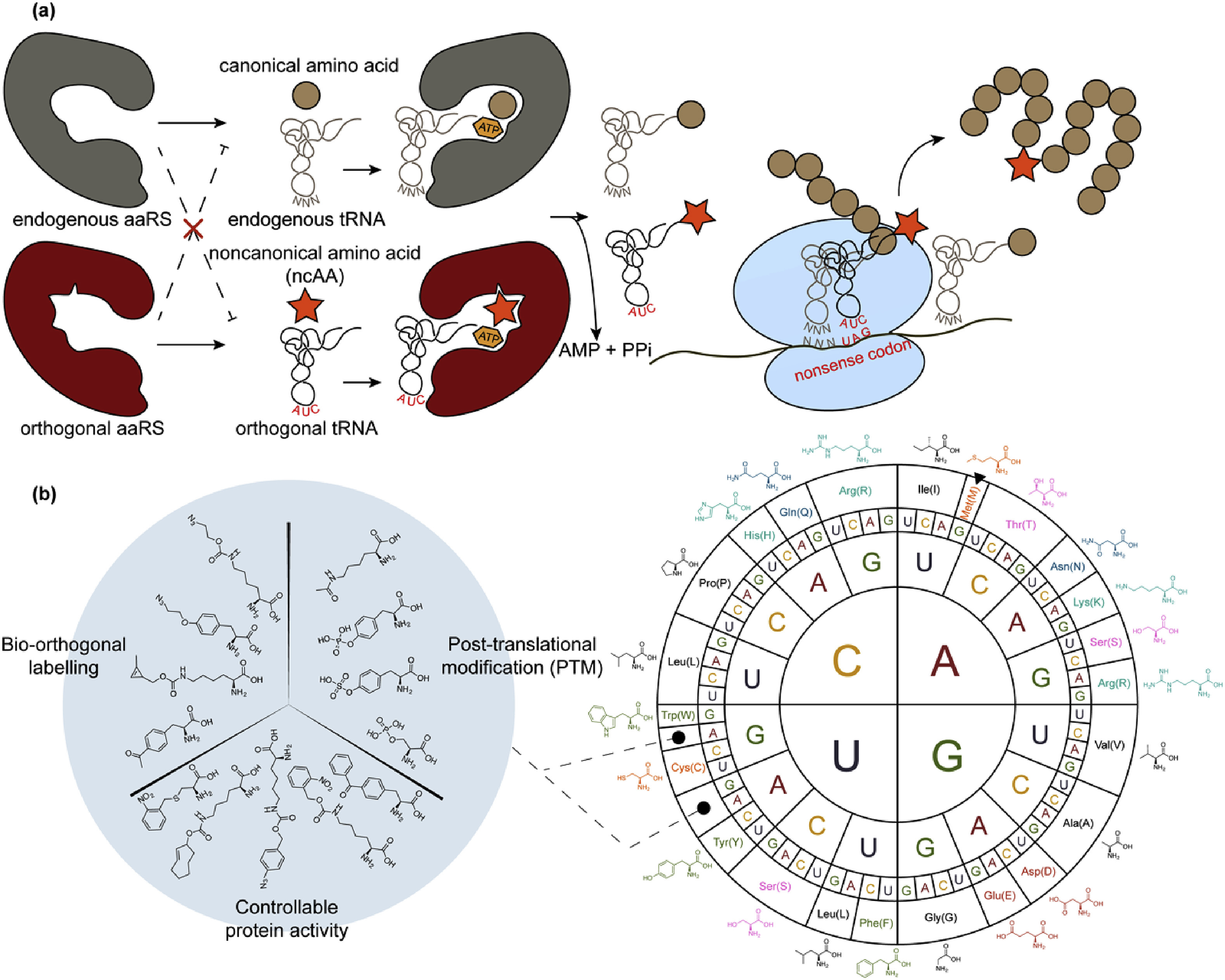
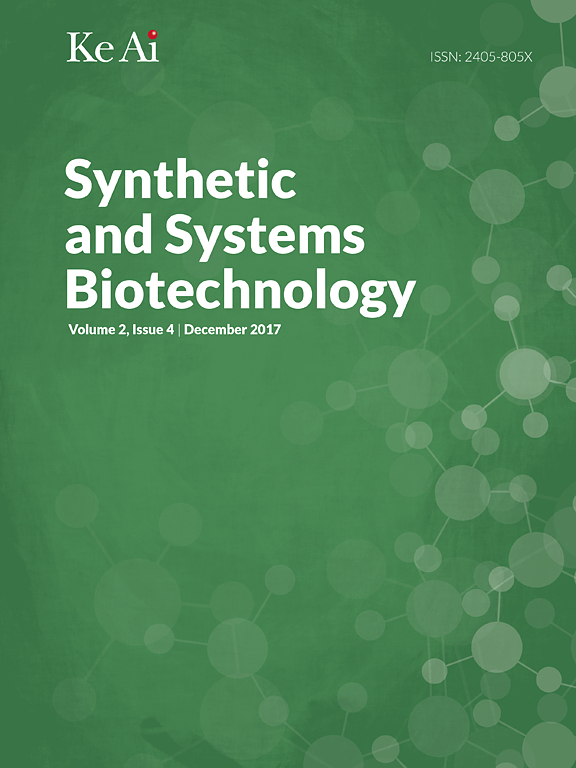
In nature, a limited, conservative set of amino acids are utilized to synthesize proteins. Genetic code expansion technique reassigns codons and incorporates noncanonical amino acids (ncAAs) through orthogonal aminoacyl-tRNA synthetase (aaRS)/tRNA pairs. The past decade has witnessed the rapid growth in diversity and scope for therapeutic applications of this technology. Here, we provided an update on the recent progress using genetic code expansion in the following areas: antibody-drug conjugates (ADCs), bispecific antibodies (BsAb), immunotherapies, long-lasting protein therapeutics, biosynthesized peptides, engineered viruses and cells, as well as other therapeutic related applications, where the technique was used to elucidate the mechanisms of biotherapeutics and drug targets.
